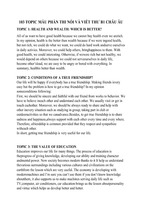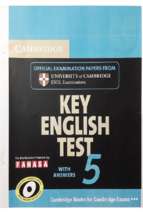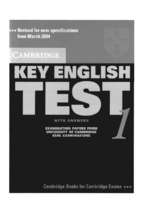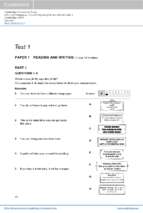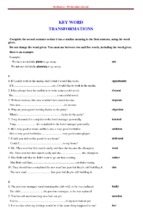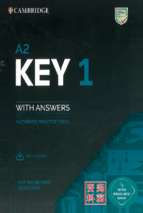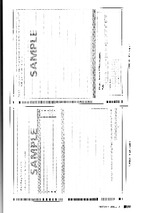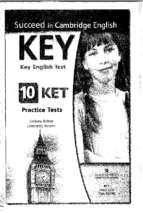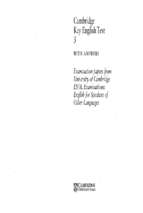VIETNAM NATIONAL UNIVERSITY, HANOI
UNIVERSITY OF LANGUAGE AND INTERNATIONAL STUDIES
FACULTY OF POST- GRADUATE STUDIES
BÙI THỊ HỒNG
RACISM IN THE NINETEENTH – CENTURY AMERICA THROUGH
LANGUAGE OF SOLOMON NORTHUP’S AUTOBIOGRAPHY
“TWELVE YEARS A SLAVE”
(Kỳ thị chủng tộc ở Mỹ thế kỷ XIX qua ngôn ngữ tự truyện
“Mười hai năm nô lệ” của Solomon Northup)
M.A. MINOR THESIS
Field: English Linguistics
Code: 8220201.01
Hanoi, 2021
VIETNAM NATIONAL UNIVERSITY, HANOI
UNIVERSITY OF LANGUAGE AND INTERNATIONAL STUDIES
FACULTY OF POST- GRADUATE STUDIES
BÙI THỊ HỒNG
RACISM IN THE NINETEENTH – CENTURY AMERICA THROUGH
LANGUAGE OF SOLOMON NORTHUP’S AUTOBIOGRAPHY
“TWELVE YEARS A SLAVE”
(Kỳ thị chủng tộc ở Mỹ thế kỷ XIX qua ngôn ngữ tự truyện
“Mười hai năm nô lệ” của Solomon Northup)
M.A MINOR THESIS
Field: English Linguistics
Code: 8220201.01
Supervisor : PhD. NGÔ TỰ LẬP
Hanoi, 2021
DECLARATION
I, Bùi Thị Hồng, hereby state that, this minor thesis is the result of my own
research and all the materials used in this study has been identified and
acknowledged. In addition, the thesis has not been submitted for any degree to any
other universities or institutions. Except where the reference is indicated, no other
person‘s work has been used without due acknowledgement in the text of the thesis.
Hanoi, November 2020
Bùi Thị Hồng
i
ACKNOWLEDGEMENTS
My minor thesis has been successfully completed thanks to the assistance
and guidance of my lecturers, friends and relatives.
First of all, I would like to express my most sincere gratitude to my
supervisor, PhD. Ngô Tự Lập for his valuable instructions, comments as well as his
advice.
Secondly, I am greatly indebted to the lecturers and officers at
the
Department of Post-graduate studies, University of Language and International
Studies, Vietnam National University, Hanoi for their contribution to my study.
PhD. Ngô Tự Lập, Prof. Nguyễn Hoà, PhD. Huỳnh Anh Tuấn have encouraged me
a lot and given me excellent pieces of advice, without which the work would not
have been completed.
Finally, I owe the deepest gratitude to my family and friends. Without their
valuable support and encouragement, this study has not been completed.
ii
ABSTRACT
Racism is a treatment of races in which one race regards as superior and the
other as inferior. The group who considers themselves as superior thinks that they
have special rights toward the other group. This study aims at analyzing and
explaining racism and resistance in the nineteenth-century in America linguistically
and socially using critical discourse analysis. This present research takes that into
account and chooses Twelve Years a Slave, a memoir by Solomon Northup, as data
that clearly illustrates how racism occurs. This memoir is narrated by a slave
working in the Deep South of the America. This research seeks to see the
representation of racism in the U.S. in the nineteenth century. This study starts from
analyzing the social context in which the memoir was written. The findings show
(1) the social grouping in the memoir as the condition in which racism was
exercised, (2) racism was represented in different discursive strategies. This
research sought to contribute to the literature on racism in the U.S. history in the
nineteenth century, to the local literature in Vietnam through understanding of
memoir as a genre.
iii
TABLE OF CONTENTS
DECLARATION .............................................................................................. i
ACKNOWLEDGEMENTS............................................................................ ii
ABSTRACT .................................................................................................... iii
ABBREVIATIONS ........................................................................................ vi
LIST OF TABLES ........................................................................................ vii
LIST OF FIGURES ...................................................................................... vii
CHAPTER 1. INTRODUCTION .................................................................. 1
1.1. Rationale ................................................................................................. 1
1.2. Aims and objectives ................................................................................ 5
1.3 Research question .................................................................................... 5
1.4. Research scope........................................................................................ 6
1.5. Research significance ............................................................................. 6
1.6. Research design ...................................................................................... 6
CHAPTER 2. LITERATURE REVIEW ...................................................... 8
2.1. Slavery as discourse in American literature ........................................... 8
2.2. Racism as discourse ................................................................................ 9
2.2.1. Definition ............................................................................................. 9
2.2.2. Racism as discourse ........................................................................... 16
2.3. Discursive approaches to racism .......................................................... 18
2.3.1. Prejudices and stereotypes ................................................................. 18
2.3.2. The socio-cognitive discourse-analytical approach........................... 19
2.3.3. Collective symbols, discourse strands, and dispositives supporting
racism ........................................................................................................... 21
2.3.4. The Loughborough group or discursive psychology of racism ......... 22
2.4. (Critical) discourse analysis .................................................................. 23
2.4.1. Discourse analysis ............................................................................. 23
2.4.2. Critical discourse analysis ................................................................. 24
2.4.3. Critical discourse analysis and racism ............................................... 26
iv
CHAPTER 3. RESEARCH METHODOLOGY........................................ 31
3.1. Context of the study .............................................................................. 31
3.2. The data................................................................................................. 31
3.3. Research questions................................................................................ 34
3.5. Summary ............................................................................................... 35
CHAPTER 4. FINDINGS AND DISCUSSION ......................................... 36
4.1. An overview of social groupings in ―Twelve Years a Slave‖ .............. 36
4.2. Racism in ‗Twelve Years a Slave‘ ....................................................... 39
4.2.1. Referential strategies ......................................................................... 39
4.2.2. Predicational strategies ...................................................................... 41
4.2.3. Argumentation strategies ................................................................... 42
4.2.4. Perspectivation, framing or discourse representation ........................ 43
4.2.5. Intensifying strategies ........................................................................ 45
4.3. Summary ............................................................................................... 48
CHAPTER 5. CONCLUSION.................................................................. 49
5.1. Recapitulation ....................................................................................... 49
5.2. Implications .......................................................................................... 50
5.3. Limitations ............................................................................................ 51
5.4. Further study ......................................................................................... 51
REFERENCES .............................................................................................. 52
APPENDICES .................................................................................................. I
v
ABBREVIATIONS
DA
Discourse analysis
CDA
Critical discourse analysis
RQ
Research question
vi
LIST OF TABLES
Table 2.1. A systemic review of racism in discourse analysis ....................... 26
Table 4.1. Social groupings in ‘Twelve Years a Slave‘................................... 37
Table 4.2. Argumentation strategies in ‘Twelve Years a Slave‘ ................... 43
Table 4.3. Prescreptivization in ‘Twelve Years a Slave‘................................. 45
LIST OF FIGURES
Figure 2.1. Schematic representation of the discursive reproduction of racism ... 20
Figure 4.1. Character system in ‗Twelve Years a Slave‘................................. 38
vii
CHAPTER 1. INTRODUCTION
1.1. Rationale
At the beginning of the nineteenth century, there was a lack of research
into racism as well as the understanding about race. According to Garner (2010),
scientists only built on the groundwork more in the Enlightenment period. Science
began to eclipse religion as the legitimate authority for explaining phenomena in
both the natural and social worlds. Texts produced by these natural science
disciplines demonstrate that the notion of dispassionate and disinterested scientific
endeavor held no sway over those interested in ‗race‘: the logic underlying
experiments is erroneous, and the interpretations of data are so weighed down under
the assumption of explicit existing hierarchies based on racial difference that the
findings are not compelling. American craniologist Samuel Morton (1839), for
example, filled the skulls of various ‗racial‘ types with lead pellets to measure their
capacity. He emerged with a league table showing that English skulls had the
largest capacity, followed by Native Americans, and then Black Americans. His
inference was that the English mind was larger, more powerful and superior. At that
time, there were 3 disciplines about the race: Phrenology, Craniology,
Anthropometry.
Phrenology was the study of the structure of the skull (bumps and
indentations) to determine a person‘s character and mental capacity. However,
phrenology is based on the idea that these can be identified from the external
surface, and people‘s behavior thus predicted. Craniology was the measurement of
cranial features in order to classify people according to race, criminal temperament,
intelligence, etc. The underlying assumption of craniology is that skull size and
shape determine brain size, which determines such things as intelligence and the
capacity for moral behavior. Anthropometry was the study of human body
measurement for use in anthropological classification and comparison. In the
nineteenth century, anthropometry was a pseudo-science used mainly to classify
potential criminals by facial characteristics.
Thus, for Dennis (2005), racism is a relatively modern concept which arose
in the European age of colonization, the growth of European capitalism and
especially the Atlantic slave trade. The concept also took its developments behind
racial segregation in the United States in the nineteenth and early twentieth
1
centuries, behind the apartheid in South Africa. Ever since, racism has been well
documented in Western culture and become a reference point in the studies and
discourses about racism (Bowser & Hunt, 1996; Fredrickson, 2015; Jordan, 1974).
Apartheid, for example, was a system of institutionalized racial segregation
that existed in South Africa and South West Africa from 1948 until the early 1990s.
Apartheid was characterized by an authoritarian political culture based on baasskap
(or white supremacy), which ensured that South Africa was dominated politically,
socially, and economically by the nation's minority white population. South Africa
abolished apartheid from 1990-1994 and today the international crime of apartheid
is a crime against humanity under international law (Mayne, 1999). Therefore,
racism is not a word. It‘s a war with forces, struggle, emancipation, frontiers as
Nelson Mandela put it:
We stand here today to salute the United Nations Organization and its
Member States, both singly and collectively, for joining forces with the masses of
our people in a common struggle that has brought about our emancipation and
pushed back the frontiers of racism. (Nelson Mandela, address to the United
Nations as South African President, 3 October 1994).
Racism has now become an everyday life construct. According to Essed (1991,
p. 1), ―many studies have identified the mechanisms of racism at a societal level, but few
have revealed its pervasive impact on the daily experiences of Blacks.‖ Du Bois (2007)
was among the first to point out that, over the generations, Blacks in the United States
developed a ―double consciousness‖. This idea is premised on the view that Blacks are
familiar with dominant group interpretations of reality and, therefore, have knowledge of
racist ideas and interpretations of reality. With their sense of history, through
communication about racism within the Black community, and by testing their own
experiences in daily life, Black people can develop profound and often sophisticated
knowledge about the reproduction of racism.
Du Bois (2007)
offers us a crucially important account of racism and
everyday life. In the recent sociological past, however, the first key point of
reference is the pathbreaking work of Essed (1991), Understanding Everyday
Racism, as she explains, from a desire to contest a view of racism which understood
it either in merely subjective terms (as a problem of prejudiced individuals) or in
abstractly objective terms (as something which could be studied only at the level of
2
social or institutional structures). Essed‘s research, in contrast, concentrated on the
lived experiences of racism and was characterized by careful attention to the hardwon understandings of those who had to routinely navigate and respond to such
experiences. A key insight of her respondents, in this respect, was that acts of
racism in everyday situations were neither arbitrary nor happenstance, but were part
of a wider pattern and had to be named as such: ‗Specific instances acquire meaning
only in relation to the sum total of other experiences of everyday racism‘ (Essed,
1991, p. 288). It is in this sense, then, that she describes racism as ‗a process [...]
routinely created and reinforced through everyday practices.‘ Racism has effect, at
least in part, through its ‗cumulative instantiation‘ day after day, its repetition and
reproduction in mundane ways of speaking and acting.
In the case of local context of Vietnam, racism has mainly been directed by
the majority and dominant ethnic group of Vietnamese Kinh against other ethnic
minorities. For example, the minorities have not benefited much from the economic
reforms (Taylor, 2007) and experienced the problem of ‗cultural remoteness‘
(Baulch, Chuyen, Haughton, & Haughton, 2002). For the case of Degars (người
Thượng) in Central Highlands, they were subjected to state sponsored colonization
by ethnic Vietnamese dwellers under the South Vietnamese regime of Ngo Dinh
Diem. During the ‗March to the South‘ (Nam Tiến), much of Khmer and Cham
territory was seized by the Vietnamese Kinh (FitzGerald, 2009). In the work of
Elliott (2003), he found out that ethnic minorities in general have also been referred
to as ‗mọi‘. Vagrants in the city are named ‗bụi đời‘ (dust of life). This term is used
to refer to ‗children of United States Citizens‘ when there were some more than 21
thousand Vietnamericans born during the Vietnam War and they were under the
name ‗bụi đời‘ (Gallagher & Mahé, 2019). For Smith and Feagin (1995), these
mixed-race Vietnamericans, in the United States, were referred to as the criminal
class (Smith & Feagin, 1995). Thus, the Vietnamese Kinh dominated government
media, propagated negative stereotypes of the ethnic minorities, those who are
impoverished and underdeveloped because of their own lack of economic and
agricultural skills (McElwee, 2008).
This present study attempted to study a memoir as discourse. Couser (2012)
states that Memoir has eclipsed ―autobiography‖ as the term of choice for a certain
kind of life narrative. ‗According to various cultural commentators – critics,
3
scholars, and reviewers - this is an age – if not the age – of memoir‘ (Couser, 2012,
p. 3). Memoir is the literary face of a very common and fundamental human
activity. It takes its root in deep human needs, desires, and habitual practices. Thus,
memoir should help readers better appreciate the way that memoir represents human
experience (See more discussion of memoir in Chapter 3, section 2).
For Couser (2012, p. 9), ‗memoir may take the form of – among many other
things – conversation narrative, confession, apology, testimony, and coming-of-age
narrative.‘ If it is a covert or a confessor who defines him/himself or her/herself in
opposition to some earlier self, an apologist seeks to defend an earlier self. In other
forms, memoir opens up a Pandora‘s box and stems the fact that it is rooted in the
real world and therefore makes certain kinds of claims of truth. The memoir
‗Twelve years a slave‘ by Solomon Northup was among the most famous memoirs
of all time. Northup concludes his memoir with the truth claims as follows:
My narrative is at an end. I have no comments to make upon the subject of
Slavery. Those who read this book may form their own opinions of the "peculiar
institution‖. What it may be in other States, I do not profess to know; what it is in the
region of Red River, is truly and faithfully delineated in these pages. This is no fiction, no
exaggeration. If I have failed in anything, it has been in presenting to the reader too
prominently the bright side of the picture. I doubt not hundreds have been as unfortunate
as myself; that hundreds of free citizens have been kidnapped and sold into slavery, and
are at this moment wearing out their lives on plantations in Texas and Louisiana. But I
forbear. Chastened and subdued in spirit by the sufferings I have borne, and thankful to
that good Being through whose mercy I have been restored to happiness and liberty, I
hope henceforward to lead an upright though lowly life, and rest at last in the church
yard where my father sleeps (Northup, 1968, p. 252).
Such truths of the American society in the nineteenth century motivated the
researcher to carry out this present study. The local literature on racism also
interested me to carry out this study project named ‗Racism in the nineteenthcentury America through the language of Solomon Northup‘s memoir ‘Twelve
Years a Slave'‘. This study also took its root in a study of autobiography genre, Rak
(2005, pp. 483-484) concerns that ‗unlike autobiography, memoir has received very
little critical attention in its own right‘ and that ‗memoir has remained largely
unexamined by literary critics and theorists. . In addition, I had strong personal
interest when I read this memoir that made me motivated to do the study.
4
1.2. Aims and objectives
Racism has been part of the American history since the European
colonization of the North America beginning in the seventeenth century. Many
African were traded to America struggling their lives as slaves, being kidnapped
from their homelands even when they gained freedom in the U.S. The social
problem of racism and discrimination just ended after the Civil War in 1865 twelve
years after the publication of ‗Twelve Years a Slave.‘ In those years, the white
Americans were in priority and the native Americans (Indians), African Americans,
Asian Americans, and Hispanic and Latino Americans were in discrimination
(Wood, 2003). Parts of the U.S. gradually came in a binary system of race, causing
free people of color to lose status as they were grouped with the slaves. They lost
certain rights as they became classified by American whites as officially ‗black‘.
Thus, the U.S. society was divided into two groups: the American whites, who were
in legal and social priority and the American blacks in which Salomon Northup was
a representative. This present research took interest in revealing how racism was
represented in the U.S. society in the nineteenth century from the perspective of a
‗black‘ slave, the author of ‗Twelve Years a Slave‘.
In brief, theoretically this research seeks to fill these gaps and look into the
representation of racism in a slavery memoir from top-down analysis and bottom-up
point as a form of resistance toward the out-group.
1.3 Research question
The research question is as follows:
How is racism discursively constructed in the nineteenth-century America
in the memoir „Twelve Years a Slave‟?
This research question sought to cut to the heart of the racist logic
represented in the text and talk of the inferiority and the superiority in a historical
moment in the U.S. history.
On answering this research question, we took interest in answering sub-questions:
(1) How are persons named and referred to linguistically in the memoir?
(2) What traits, characteristics, qualities and features are attributed to them?
(3) By means of what arguments and argumentation schemes do specific persons or
social groups try to justify and legitimize the exclusions, discrimination, suppression and
exploitation of others?
5
(4) From what perspective or point of view are these namings, attributions and arguments
expressed?
(5) Are the respective discriminating utterances articulated overtly, are they even
intensified or are they mitigated?
1.4. Research scope
The linguistic resources used in this present research were the five discursive
strategies suggested by Reisigl and Wodak (2001): (1) referential strategies, (2)
predicational strategies, (3) argumentation strategies; (4) perspectivation, framing or
discourse representation; and (5) intensifying strategies.
The analysis was from two approaches: top-down analysis to reveal the
representation of the in-group‘s racial discrimination and bottom-up analysis to
reveal the racial resistance following the denial of racism or racist resistance (Van
Dijk, 1992).
In this research, the researcher focused on analyzing the memoir ‗Twelve Years a
Slave‘ using the analytical framework proposed by Reisigl and Wodak (2001).
In the Northup‘s memoir, the characters in the story can be divided into some
categories based on the point of view taken, major and minor character, protagonist
and antagonist character, round and flat character, dynamic and static character,
typical and neutral character. In Twelve Years a Slave, there are 15 major characters
such as Solomon Northup as the main character and 14 others grouped in the table
4.1 (see Table 4.1) and 25 minor characters. The minor characters were not
analyzed in this research because of the scope of the study.
1.5. Research significance
The theoretical significances of this research were to contribute to the
development of literature of racism in the world and in the local context, especially
the phenomenon of racism in the darkest age of the American history. Besides, this
research gave contribution to development of understanding, particularly the literary
study on the memoir ‗Twelve Years a Slave‘. This research sought to contribute to
the understand memoir genre because it has been neglected. Practically, teachers
and students may benefit from the awareness of racism in American history.
1.6. Research design
This thesis consists of five chapters. Following this first chapter introduction, which briefly drew attention to the basic concepts of racism, and the
6
rise of the problems of racism in America in the nineteenth-century, racism in
Vietnam and the researcher‘s drive to carry out this research. A focus for the
research question was subsequently discussed and guidelines for an appropriate
methodology were proposed. The scope of the study was also set up to narrow down
the research problems and to explain the feasibility of the study.
Chapter 2 reviews the extant literature and previous studies that motivates the
researcher to conduct this research and generates the research problems of this thesis.
This chapter suggests a literary contribution that defines the concepts of racism in a
historic time in the U.S. and the importance of memoir in the U.S. literature. A brief
discussion on racism as discourse and approaches to studying racism in discourse were
discussed. Critical discourse analysis was discussed as an approach to the study of racism
and the final section reviews previous related studies.
Chapter 3 describes the data collection procedures, the research design and
theoretical and analytical framework of the study. Key findings from analysis of the
research data are presented in Chapter 4 along with a detailed account and
interpretation of the findings of the study, with reference to the research question
and in relation to previous relevant research findings. Chapter 5 summarizes the
study findings, focuses on theoretical and pedagogical implications of the study.
7
CHAPTER 2. LITERATURE REVIEW
This chapter begins with a discussion of the role of slavery in the American
literature. Slave narrative is one of the most influential forms of American
literature, in which slave narrative is a form of autobiography. Section 2.2 discusses
many definitions of racism before going on to discuss racism as discourse. Section
2.3 discusses the approaches to racism in discourse from prejudices and stereotypes,
socio-cognitive, collective symbols to the Loughborough school. Section 2.4
discusses discourse analysis as a chosen approach to study racism in this research.
2.1. Slavery as discourse in American literature
Literature is a written or printed work which expresses feeling, attitude and
life of human in society. So, essentially literature can also be called as a creative act
of the writer‘s imagination in selecting, ordering, and interpreting life experiences
in a written work. It also gives lesson from various aspects of human life such as
religious, social, moral and also cultural.
Slave narrative or an account of the life is either in oral or written form by
the slave or a former slave personally. Slave narrative is one of the most influential
traditions in American literature, which shapes the form and themes of both fiction
and autobiography in the history of the U.S. In which, autobiography can take
different forms including diaries, journals, memoirs and reminiscences to a formal
book. An autobiography can be divided into four sub-types: thematic, religious,
intellectual, and fictionalized. ‗Autobiography is ideally understood by both its
authors and its readers to be exemplary, as a reliable and true portrayal of a life
from which others can learn‘ (Cuddon, 2013, pp. 60-61).
The most prominent feature of this form of literature is that it is told or
written by African Americans. From the 1760s to the end of the Civil War
(1861-1865) in the U.S., there were about 100 autobiographies of African
American slaves. It was in the 1930s that these autobiographies were gathered
and counted up to 2500 works.
American slave narrative typically focuses on the author‘s rite of passage
from the deep South to freedom. The rise of the abolition movement in the early
nineteenth century witnesses the awareness of the harsh realities of slavery in the
U.S. In response to that, the narrative of Solomon Northup (1853) claimed its
attraction to readers not only in the U.S. but also internationally.
8
2.2. Racism as discourse
2.2.1. Definition
Contemporary racism is a complex societal system in which peoples of
European origin dominate peoples of other origins, which happens mostly in Europe,
North America, South Africa, Australia and New Zealand (van Dijk, 1991). This
relation of dominance may take many different forms of economic, societal, cultural,
and political sphere where usually negatively valued characteristics ascribed to the
dominated peoples. In other words, ‗race‘ is about physical appearance and has been a
characteristic of humanity for centuries (Garner, 2010).
Historically, the basic categorization and negative ascription were first
perceived due to the bodily appearance, mainly because of their color. These
differences soon developed into folk taxonomies about different races. Along with
the pseudo-scientific arguments against superior races in the eighteenth and
nineteenth centuries led to the conclusion that the ‗white‘ race was superior to the
other races (van Dijk, 1991). Although nowadays racism is not presently disused
because most white people are no longer assumed to believe in their racial
superiority since after the World War II and the Holocaust. While black people‘s
knowledge about racism is relevant. As Du Bois (2007) was among the first to
recognize that over the generations, Blacks in the United States developed a ‗double
consciousness.‘
So, if we accept that there are physical differences possible, yet when we
think about ‗race, there are not many features that we are interested in, and the
problem may become ‗why is this the case?‘ (Garner, 2010) when the physical
description is not actually exact. Nobody living is actually white. Nobody is really
‗black‘ in the sense of the ink on this page. Thus, such terms must have social
meanings, but not biological ones. There are certain ways of distinguishing between
one group to another in a specific context, and we accept ‗race‘ is one form of
categorization, one of the legitimate ways in which we try to make sense of
difference. However, in the case of the United States, Michael A. Omi observed
that: ‗… the meaning of race in the United States has been and probably always will
be fluid and subject to multiple determinations. Race cannot be seen simply as an
objective fact, nor treated as an independent variable‘ (Omi, 2001, p. 244).
From an anthropological perspective, ‗race‘ is a ‗cultural category of
9
difference that is contextually constructed as essential and natural – as residing
within the very body of the individual‘ (Silverstein, 2005, p. 364). In this sense, race
is a social construction, and its meanings have effects on social relations. ‗The
concept of ―race‖ can rationalize the claim of collective as well as individual
superiority, and it can be used to exercise power, to oppress and exploit specific
social groups. Often, ―race‖ is employed to deny specific groups access to relevant
resources, to work, welfare services, benefits, housing, and political rights‘ (Wodak
& Reisigl, 2015, p. 577).
Racism was obvious under the Nazi Germany, South Africa under apartheid
(1948-1994), and the segregated southern states of the U.S. which resulted in Jim
Crow laws. However, we recognize that these systems are not paradigms that run
constantly through time but rather they were extreme points in time. Besides, it is
perfectly possible that individuals hold discriminatory opinions, racism constitutes
much more of just personal opinions. This idea holds true that the understandings of
racism are of different levels of the phenomenon, some of which are to do with
historical legacies (The Holocaust, for example) and some of which are to do with
social formations in an unequal collective power relationship (Garner, 2010). For
Garner (2010), terms such as ‗racialism‘ and ‗race prejudice‘ were used in previous
eras to describe more or less what the field of study is today. Nonetheless, Williams
(2015, p. 191) persuades us that racialism which appeared in the early years of the
20th century has been shortened to racism and racist to describe the opinions and
actions of the proponents of racial superiority or discrimination.
We understand that ‗racism‘ is a form of social discrimination based on
practices of racialization in semiotic practices that construct social relations in terms
of race categories (Wodak & Reisigl, 2015). In a loose sense, racism and racist can
be understood quite differently as ‗genetic‘, ‗biological‘, ‗cultural‘, ‗ethnopluralist‘,
‗institutional‘, and ‗everyday‘ racism, a ‗xeno-racism‘, a ‗racism at the top‘, an
‗elite racism‘, a ‗racism in the midst‘, an ‗old‘ and a ‗new‘ or ‗neo-racism‘, a
‗positive racism‘, even a ‗non-egalitarian‘ and a ‗differentialist racism‘ (Reisigl &
Wodak, 2001, pp. 5-10).
It is commonly agreed that racism existed before the coinage of the word, but
there is not a wide agreement on a single definition of what racism is and what it is
not (Garner, 2010).
10
During the last seventy years or so, racism has become a key idea in daily
discourse as well as in sociological theory. In which, the concept itself is also
heavily negatively loaded, morally and politically (Miles & Brown, 2003). One of
the most systematic and radical approaches to the issue of ‗race‘ and ‗racism‘ is that
of Robert Miles (1993). For him, to analyze ‗race problems‘ adequately, we must
eliminate all conceptions of ‗race‘ as a thing in itself, with the power to have
effects. We must do this despite the fact that the idea of ‗race‘ constitutes an
element of everyday common sense. He adds:
There are no ‗races‘ and therefore no ‗race relations.‘ There is only a belief
that there are such things, a belief which is used by some social groups to construct
an Other (and therefore the Self) in thought as a prelude to exclusion and
domination, and by other social groups to define Self (and so to construct an Other)
as a means of resisting that exclusion. Hence, if it is used at all, the idea of ‗race‘
should be used only to refer descriptively to such uses of the idea of ‗race‘ (Miles,
1993, p. 42).
Miles‘ analysis was influential in such a way that: first, the notion of
‗racialization‘ denotes the dynamic and dialectical representational process of
categorization and meaning construction in which specified meanings are ascribed
to real or fictitious somatic features. Racialization is also an ideological process
(Miles, 1989, pp. 74-77; Miles & Brown, 2003). Second, Miles used the term
‗exclusionary practice‘ to avoid a semantic overstretch of the term racism (Miles,
1993); third, Miles viewed that ‗racism‘ is an ideology both of exclusion and
inclusion (Miles & Brown, 2003); fourthly, racism seems to have been equated with
institutional racism, denoting any institution with the power to discriminate rather
than a systematic ideology of ‗race‘ (Miles & Brown, 2003, p. 69). Finally, Miles
contributed the concept of ‗ideological articulation‘ as to illuminate how ideologies
such as racism, nationalism, sexism and ethnicism can verge on each other and how
they are connected as well as overlap (Miles, 1993, p. 79).
With a reference to the two concepts ‗inegalitarian‘ and ‗differentialist
racism‘: the concept of ‗inegalitarian racism‘ is intended for denoting the
legitimization of domination, discrimination, and separation based on overt
doctrines in support of genetic, biological inferiority, whereas ‗differentialist
racism‘ focuses on cultural differences such as lifestyles, habits, customs, and
11
- Xem thêm -


